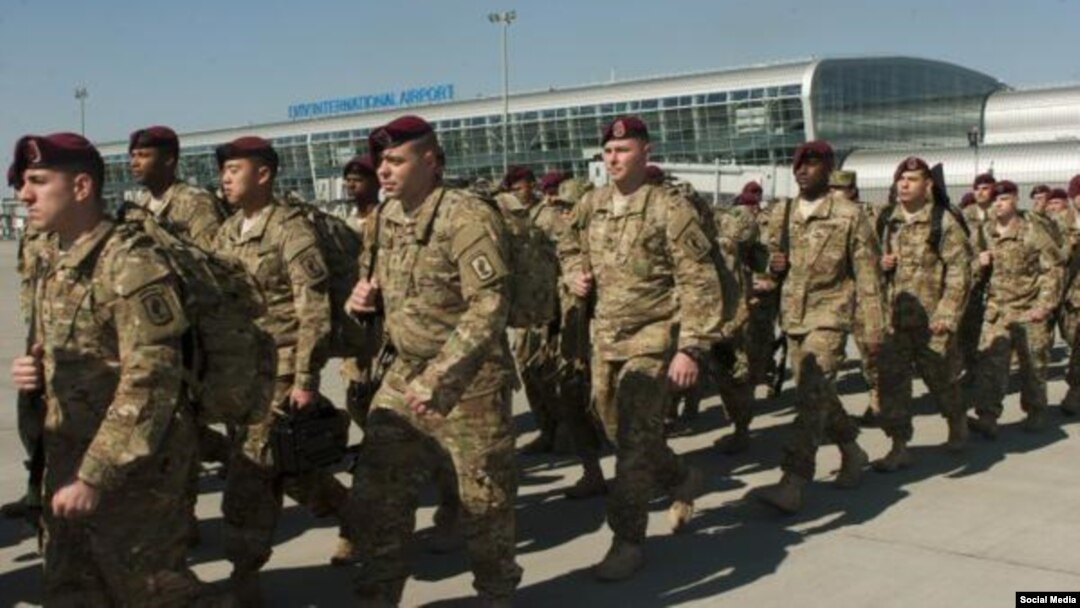Russia has criticized the arrival of 300 U.S. paratroopers in Ukraine to train troops from the National Guard, saying their presence could destabilize the situation in the conflict-torn country.
Russian President Vladimir Putin's spokesman, Dmitry Peskov, told reporters on April 17, "The participation of instructors or specialists from third countries on Ukrainian territory, where the domestic Ukrainian conflict is unresolved...could destabilize the situation."
It was unclear why Peskov used the term "third countries," since Moscow has consistently described the Ukraine conflict as a civil war and insisted all along that it is not a party to the Ukrainian conflict despite Kyiv and Western governments accusing it of active involvement.
The U.S. Army announced the arrival of the paratroopers on April 16, saying they would train 900 members of a Ukrainian reservist force that was called up in 2014 to bring volunteers and pro-government militia under government control.
The training operations are taking place in the western region of Lviv, about 1,000 kilometers from the areas in eastern Ukraine's Donetsk and Luhansk regions where Russian-backed rebels hold territory and are fighting government forces.
U.S. Army Major Jose Mendez, a brigade operations officer, said the U.S. trainers would be "conducting classes on war-fighting functions, as well as training to sustain and increase the professionalism and proficiency of military staffs."
Troops from the same U.S. unit were deployed to Poland, Estonia, Latvia, and Lithuania in 2014 to train forces there and alleviate concerns raised by those countries over Russia's military intervention in Ukraine.
About 200 of the U.S. paratroopers from the 173rd Airborne Brigade also took part in a September 2014 NATO training exercise called Rapid Trident in western Ukraine along with 1,100 troops from 14 other NATO member and partner countries.
The Kremlin also complained about that NATO training exercise, which had been scheduled before Russia's illegal annexation of Crimea in March 2014 and before fighting broke out in eastern Ukraine.
The conflict in eastern Ukraine has killed more than 6,000 people during the past year and continues despite a February cease-fire agreement that has decreased fighting.
The Kremlin said on April 17 that diplomatic efforts aimed at resolving Ukraine's conflict were continuing "at the high level of foreign ministers" from Ukraine, Russia, France, and Germany.
Meanwhile, about 2,200 troops from the United States, Britain, Moldova, and Romania launched training exercises in southeastern Romania on April 16 close to the Ukrainian border in an operation called Wind Spring 15.
In a separate exercise launched this week called Atlantic Resolve, the U.S. Air Force also deployed 12 A-10 Thunderbolt II aircraft in Romania.
Those combat planes, which also are known as Warthogs, are designed with the sole purpose of providing close air support to ground troops that are engaged in battle.
U.S. Air Force General Darryl Roberson told reporters at Campia Turzii air base in northwestern Romania on April 16 that Atlantic Resolve was aimed at reassuring Eastern European countries concerned about Russia's military role in Ukraine and its aggression in the region.
Roberson said, "Intimidating actions...have created significant distress among East Europeans and resurrected thoughts of a not-too-distant past."


